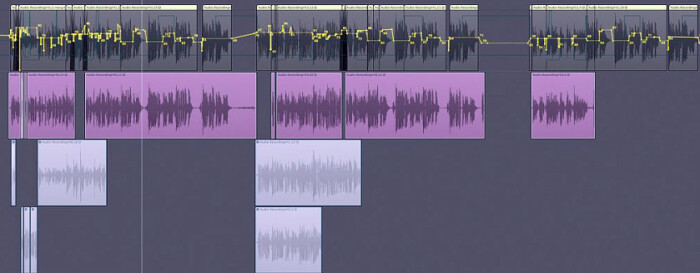Today we'll see how to automate the most important track of your mix. This is usually the vocal track, but it might as well be a solo instrument. The true star of your song deserves special attention when it comes to automation. After all, everything else is meant to showcase it. Do note that to make both writing and reading easier I will call this star instrument "Alpha" in the following paragraphs.
The devil is in the details
I’ll assume that you have already done the functional automation for the alpha track and jump right into the artistic side of things. In my book, the first thing you should do is roughly automate the volume of Alpha according to the different sections of the song you’re mixing. In other words, taking the classic verse/chorus structure, you should increase the volume during the choruses and reduce it during the verses to respect the basic logic of emotional rollercoasters applied to music.
Next, you should take the time to automate it more precisely so you can reveal the details of the Alpha track. In other words, ride the fader. Many newbies skip this step completely. And yet it is precisely this procedure that really enables your Alpha instrument to shine, making it more dynamic, more lively, in a much more natural way than a compressor would, for instance. And the best part is that this ride is completely free – except, of course, for the price of your DAW – since automating the volume fader doesn’t require a plug-in. Why not give it a try then?
Don’t hesitate to take out the magnifier glass and enhance the smallest details that you deem appropriate, like a particularly moving sigh or a captivating string rubbing with the fingers. Also make sure that the discourse of Alpha is perfectly intelligible at all times: bring down the notes or words that are too loud and bring up the ones that are too soft. Finally, attenuate with great care any unwanted noises, be it a sibilance, unpleasant mouth noises, too powerful plosive sounds, etc.
All this might seem tiresome and time-consuming, but trust me, it’s worth it. You’ll see that not only will you be more comfortable the more you do it, but also that your Alpha track doesn’t really need that much processing, be it compression, de-essing, etc. And the overall mix will be very grateful!
To finish, here’s a summary of my own personal automation process:
- Functional automation for each track, usually “drawing” with the mouse
- Artistic automation for all virtual mixer channels, in real-time as long as possible, even if it takes several run-throughs
- Artistic automation in detail for the Alpha instrument(s), preferably in real-time due to the “live” aspect of it, taking advantage of the Touch automation mode, but always open to any eventual retouches with the mouse, if need be
This is by no means the only way to do it, but I hope it helps you find the automation workflow that works best for you.

